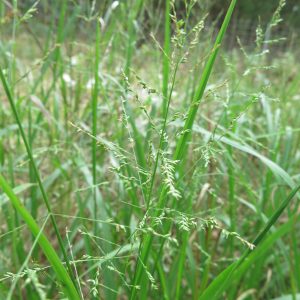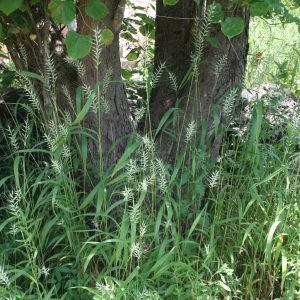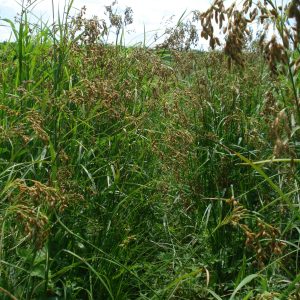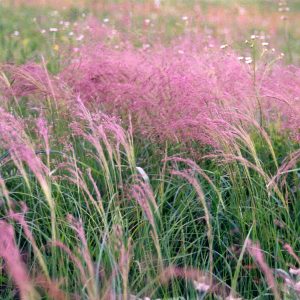Sedge, Hop
Carex lupulina
Ornamental, spikey seed heads; seeds eaten by many birds and foliage by insects, water turtles, and deer
$3.00 – $87.00
For quantity discount pricing, request a quote.
Description
Carex lupulina, commonly known as Hop Sedge, is a native perennial sedge. It grows to a height of 1½-3¼’ tall, forming a loose tuft of flowering culms and leaves.
Wildlife notes
A variety of wildlife use sedges (Carex spp.) as a source of food and cover. Insects that feed on Hop Sedge and other wetland sedges include aquatic leaf beetles, Sedge Billbug, various aphids, various leafhoppers, the seedbugs, the stem-boring larvae of some flies, the caterpillars of various skippers, caterpillars of the butterflies Appalachian Brown and Eyed Brown, caterpillars of such moths as American Ear Moth and Tufted Sedge Moth, and sedge grasshoppers. These insects in turn are eaten by insectivorous birds, frogs, snakes, and other wildlife. The seeds of wetland sedges are an important source of food to various birds, including coots, ducks, rails, gamebirds, and granivorous songbirds. White-Tailed Deer browse on the foliage of these plants sparingly as they prefer broad-leaved plants. Wetland sedges are also a minor source of food to some turtles.
Forage notes
No information currently available.
Landscaping notes
This species prefers full sun to light shade, wet to moist conditions, and soil consisting of loam, clay-loam, silty loam, or sandy loam, and some decaying organic material. Occasional inundation by slow-moving or stagnant water is readily tolerated. Does well cultivated in a garden.
Restoration notes
Habitats include wet prairies, prairie swales, wet meadows along rivers, low areas along ponds and lakes, typical swamps and sandy swamps, openings in bottomland woodlands, shallow vernal pools, degraded seasonal wetlands, and ditches. Often used in wetland restorations.
Additional information
| Weight | N/A |
|---|---|
| Unit | Packet, Ounce, Pound |
| Light | Full Sun to Part Shade |
| Soils | Moist, Wet |
| Height | 24"-36" |
| Bloom Month | May, Jun |
| Specialty Uses | Wildlife, Landscaping, Cut Flower |
| # seeds/pkt | 200 |
| Packet coverage area | 5 sq. ft |




